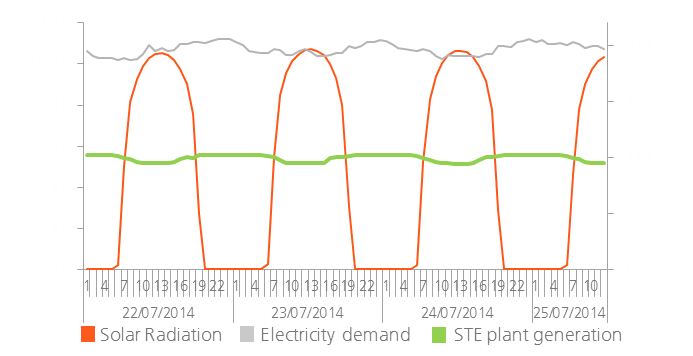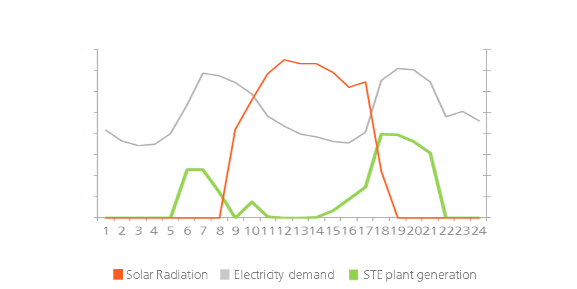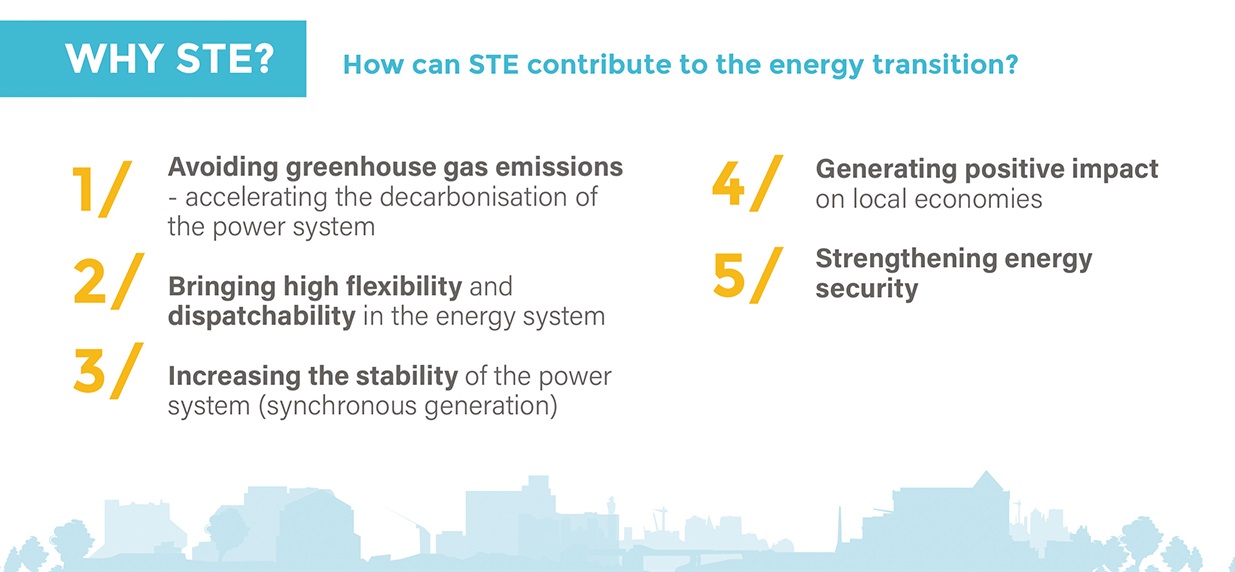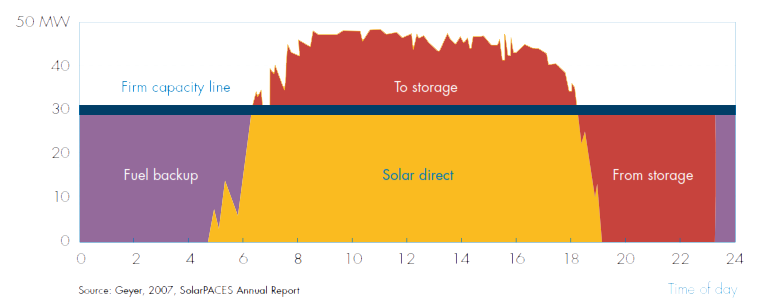Dispatchability
Dispatchability is the ability of a power-producing facility to provide electricity that can be dispatched at required amounts of power on demand of the grid operator. Power plants with dispatchable generation can be turned on or off, or can adjust their power output on demand.
Dispatchability is one of the characteristics that makes CSP a favoured option among other renewable resources, thanks to its storage and the possibility of hybridisation, CSP plants can effectively follow the demand curve with high capacity factors delivering electricity reliably and according to plan.
Thermal Storage system allows provide power during periods of absence of direct solar radiation, so that periods of solar gain and the power supply does not have to happen at the same time. Besides, it allows discharge into the power network requires it, regardless of the direct radiation that is affecting the feedback system.
All CSP plants can store heat energy for short periods of time and thus have a “buffering” capacity that allows them to smooth electricity production considerably and eliminates the short-time variations that non-dispatchable technologies exhibit during cloudy days.
- Below, we can use the dispatch of the CSP in several cases:

Source: AbengoaIn this example the power plant ensures the electricity generation in a 24/7 basis.
- Peaker designed power plant

Source: Abengoa
For this case, the CSP plant supplies electricity when needed to help covering demand peaks.
Firmness and dispatchability are the main advantages over other intermittent forms of renewable energy, such as PV or wind. These technologies require additional investments in conventional power plants to back up generation to follow demand: in addition to the extra investment required and the implications for resource security, they will not provide a CO2 free generation system.
Grid integration
The production of electricity in a conventional power station is based on steam generation with a heat source and the use of this steam to make the turbine and the alternator works that converts mechanical power into electrical power. Traditionally, the heat needed to generate that steam is supplied by combustion of coal, leading emissions of CO2 and other gases; another option is nuclear fission, which requires strict security and management of radioactive waste associated.
However, solar thermal power plants produce electricity through a similar process, but prevent greenhouse gas emissions or production of hazardous waste to directly use the sun as an energy source. In addition, unlike other renewable sources under the variability of meteorology, the large thermal storage capacity that have these plants enables them to be manageable, that is, produce energy when needed and in the right quantities.
On the one hand, the dispatchability reduces the amount of rapid-response plants connected to the electricity grid in order to balance the possible variations of resources such as solar radiation or wind energy. Considering that rapid-response plants combined are cycle natural gas or hydroelectric power, this further reduces emissions of greenhouse gases and optimizes the use of water resources. CSP could avoid fluctuations energy produced and its storage enables them to produce at peak hours, which in many cases are the first of the night. This decreases the amount of energy generated by other plants during those hours, leading to a reduction in fossil fuel consumption, emissions and even the price to be paid by the consumer.
In contrast to other plants based on renewables sources that use power electronic devices and only inject the maximum power available at all times, CSP plants can contribute to the stability of the system, i.e. to maintain tension and frequent in the range established by the system. This fact avoids that fossil fuel plant must be connected, not only perform this function instead of these plants, but other renewable technologies that are not able to provide these services plants. Thus, thermal solar plants allow increasing the proportion of renewable energy that can be accommodated without the need for conventional backup plants, leading the way towards a more sustainable electricity system.







